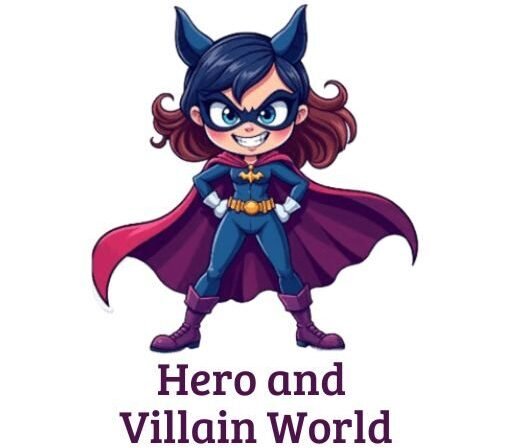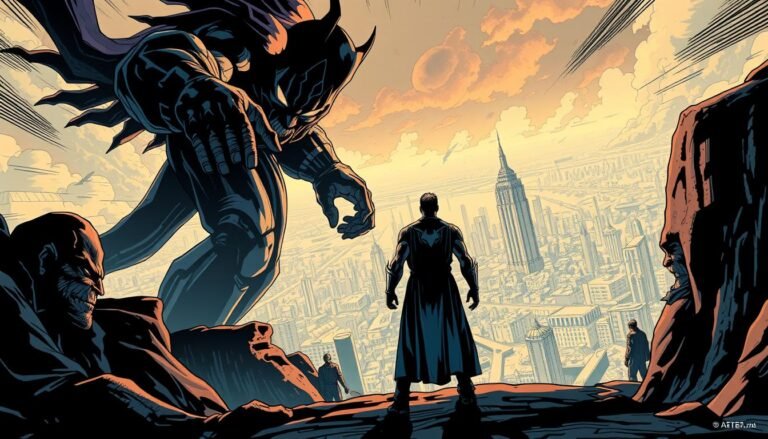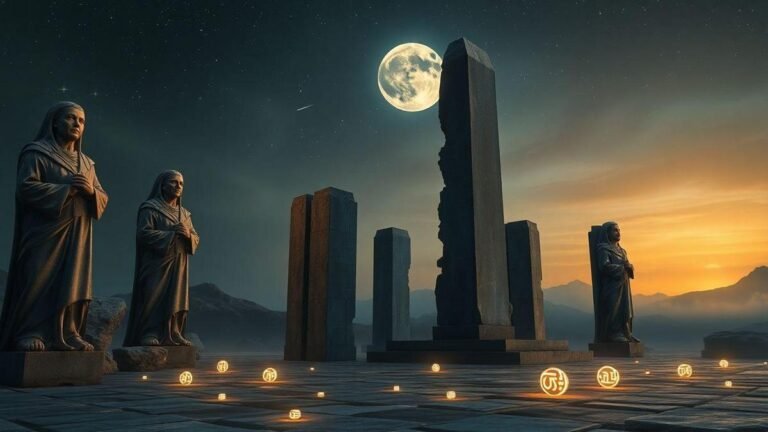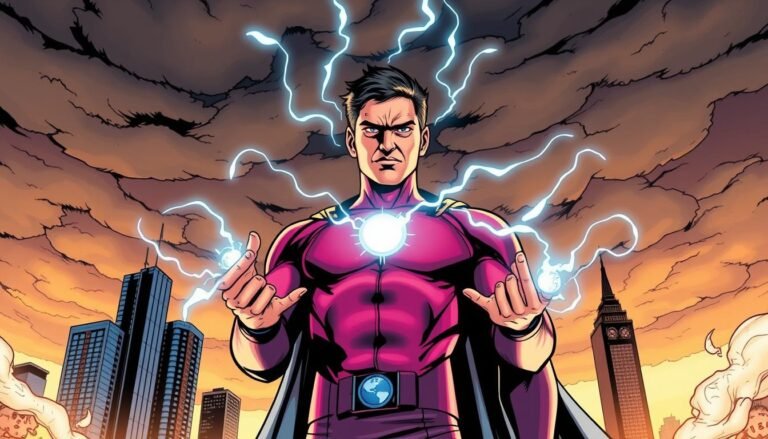The Legacy of Superman

Growing up, I remember flipping through comic pages, mesmerized by the character of Superman. His life as both Clark Kent and the man steel felt like a perfect balance of humanity and heroism. It wasn’t just his powers that captivated me—it was his unwavering sense of justice.
One comic that stands out is Superman: The Legacy of Superman #1, published in March 1993. This issue, with its iconic cover by Art Adams, captured the essence of the superhero. It wasn’t just about his appearance or abilities; it was about the legacy he left behind.
Kingdom Come, a pivotal story in comic history, redefined how we see heroes. Its themes of responsibility and hope resonate even today. This blog will dive into its origins, characters, and critiques, offering a deeper look into this iconic narrative.
Introduction and Comic Book Context
Kingdom Come redefined what a superhero comic could achieve, blending art and narrative seamlessly.
Its release in the mid-90s marked a turning point, challenging traditional storytelling and setting a new standard for the genre. This wasn’t just another comic; it was a cultural moment that reshaped how we view heroes.
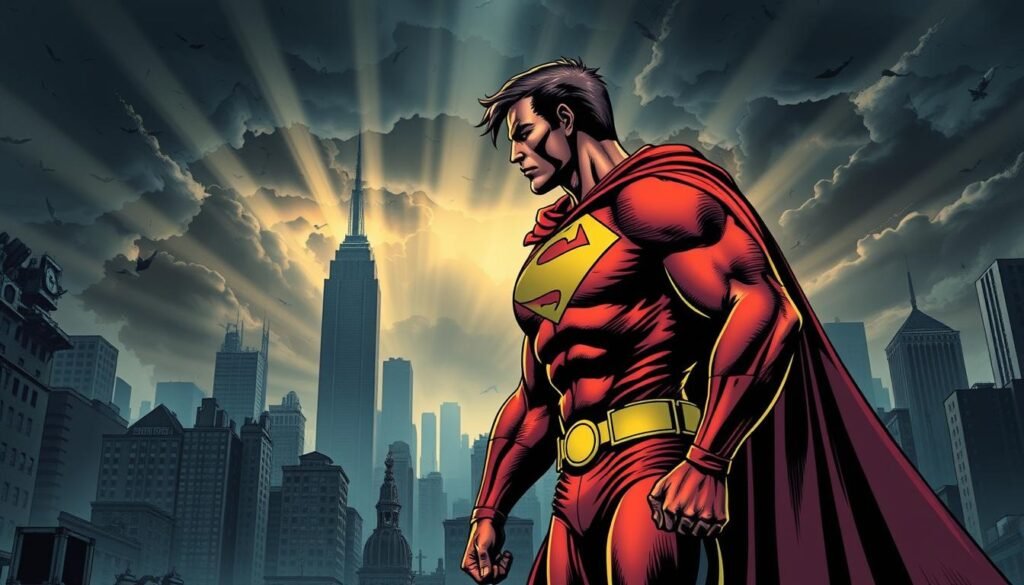
Overview of Kingdom Come and Its Significance
Kingdom Come introduced readers to a world where heroes grappled with moral dilemmas and the consequences of their actions. Its thematic depth explored ideas of justice, responsibility, and the legacy of heroism.
The story’s intricate plot and rich character development made it a standout in the comic book world.
One of the most striking aspects was its art style. Alex Ross’s painted illustrations brought a cinematic quality to the pages, making every appearance of the characters feel larger than life. This visual approach elevated the storytelling, creating an immersive experience for readers.
Setting the Stage for a Revolutionary Comic Era
Kingdom Come arrived at a time when comics were evolving. It pushed boundaries, blending mature themes with traditional superhero elements. This bold approach influenced countless writers and artists, inspiring them to explore deeper narratives and complex character arcs.
Its impact extended beyond the pages, shaping how future comics were created and perceived. By challenging conventions, Kingdom Come paved the way for a new era of storytelling, where heroes were not just symbols of power, but reflections of humanity itself.
Collecting some of Superman’s greatest and most influential tales, this graphic novel box set is the perfect reading list for anyone who loves the Man of Steel.
Celebrate 2025’s new Superman film with this collection of his most iconic adventures!
Collecting some of Superman’s greatest and most influential tales, this graphic novel box set is the perfect reading list for anyone who loves the Man of Steel.
Creator and the Origins of Kingdom Come
The creative vision behind Kingdom Come reshaped my understanding of comics. It wasn’t just a story; it was a masterpiece crafted by writer Mark Waid and artist Alex Ross. Their collaboration brought a new level of depth to the superhero genre.
Insights into the Visionary Creator
Alex Ross’s artistic approach was groundbreaking. His use of photo-realism made every character feel alive. I remember being struck by the appearance of Superman in Kingdom Come. His costume and presence were iconic, yet deeply human.
Mark Waid’s writing added another layer. He explored themes of legacy and responsibility, making the story resonate on a personal level. Together, they created a scene that felt both epic and intimate.
Historical and Cultural Influences Behind the Story
Kingdom Come was shaped by its time. The 1990s were a period of change in comics, and this story reflected that. It critiqued the darker trends of the era while offering a hopeful vision.
Cultural shifts also played a role. The story’s themes of justice and morality mirrored real-world debates. This connection made it more than just a comic; it was a reflection of society.
Looking back, I see how Kingdom Come’s origins connect to the broader legacy of Superman. It’s a reminder that heroes are more than their powers—they’re symbols of hope and humanity.
First Appearance and Magazine Features
February 4, 1993, marked a pivotal moment in comic history with the release of Superman: The Legacy of Superman #1.
This issue, with its March 1993 cover date, introduced readers to a new chapter in the character’s journey. The iconic cover by Art Adams instantly became a fan favorite, capturing the essence of the man steel in a single image.
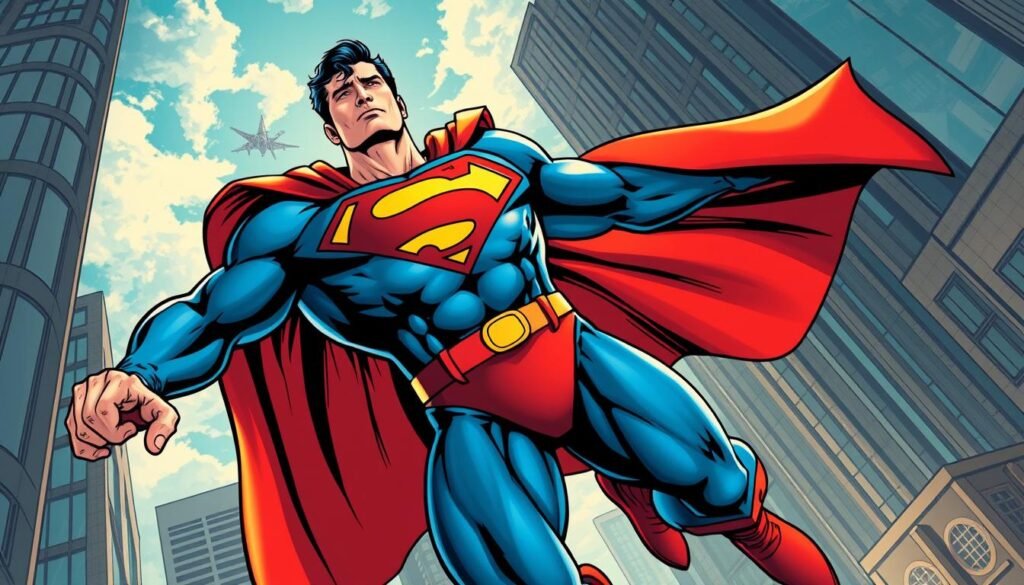
Debut Issue Details and Publication Timeline
The issue featured contributions from a talented team, including writers Karl Kesel, Roger Stern, and Dan Jurgens. Walt Simonson’s work as both penciler and inker added depth to the appearance of the characters.
Glenn Whitmore’s coloring brought vibrancy to every scene, making the issue visually stunning.
One standout storyline, “The Guardians of Metropolis!”, introduced the character Auron, adding a fresh dynamic to the narrative. The issue also tied into the broader “Funeral for a Friend” arc, making it a must-read for fans.
Key Magazines and Reprints in DC History
Over time, this issue gained recognition through reprints in key DC magazines. Stories like “The Guardians of Metropolis!” and “Funeral Pyres!” were later included in the World Without a Superman trade paperback.
These reprints ensured that the legacy of the issue lived on, reaching new generations of readers.
Reflecting on these details, I’m reminded of how this issue shaped my understanding of the superhero genre. It wasn’t just a comic; it was a cultural milestone that continues to inspire. For more insights into Superman’s enduring impact, check out this deep dive.
The Legacy of Superman
Reflecting on Superman’s journey, I’m struck by how Kingdom Come reshaped the idea of heroism. This comic didn’t just tell a story; it redefined what it means to be a superhero. Its themes of responsibility and hope continue to inspire fans and creators alike.

Kingdom Come’s character development was groundbreaking. Superman’s appearance in this story felt both familiar and fresh. His costume, with its iconic cape and shield, symbolized his enduring legacy. The scene where he returns to the daily planet remains one of my favorites.
What sets Kingdom Come apart is its exploration of moral dilemmas. The antagonist isn’t just a villain; they represent the darker side of humanity. This complexity makes the story timeless. As a fan, I see how it influenced modern comics, from their plan to their execution.
“Kingdom Come isn’t just a comic; it’s a reflection of our values and struggles.”
Looking back, I’m amazed by how this story connects to Superman’s roots. It’s a reminder that heroes evolve with time. The writer and artist crafted a place where fans could see their ideals reflected. This is why Kingdom Come remains a benchmark in comic history.
For me, Superman’s legacy is about more than his powers. It’s about the hope he represents. Kingdom Come captured this perfectly, making it a story I’ll revisit for years to come.
Key Characters and Their Roles
Exploring the characters of Kingdom Come felt like uncovering layers of a complex story. Each character brought something unique to the narrative, making the comic unforgettable. From the iconic man steel to the supporting cast, every role was carefully crafted to enhance the story.
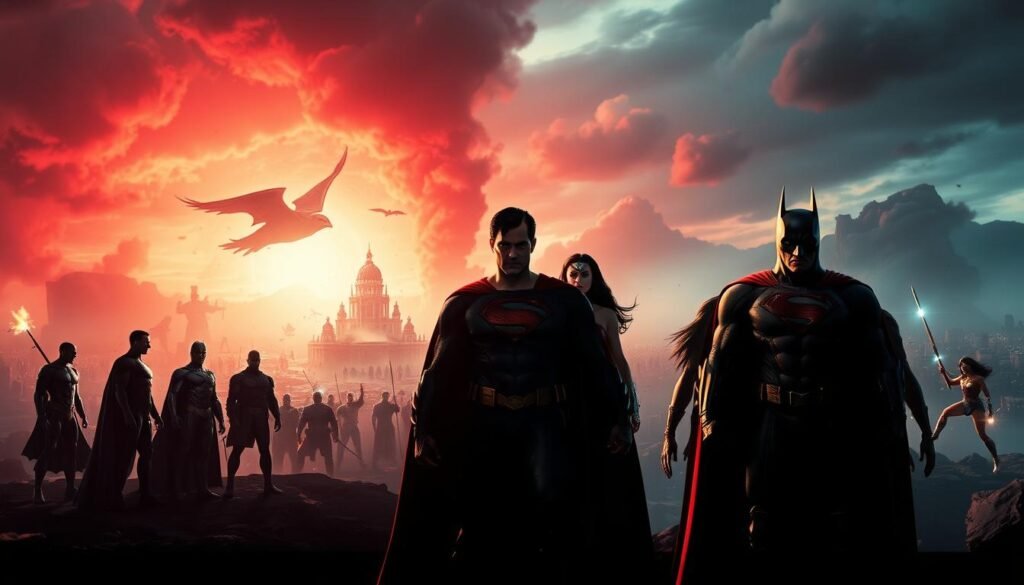
Main Heroes and Iconic Figures
Superman’s appearance in Kingdom Come was both powerful and introspective. His costume, with its classic design, symbolized hope and resilience. This version of the superhero felt more human, grappling with moral dilemmas and the weight of his legacy.
Other heroes like Wonder Woman and Batman also stood out. Their roles were pivotal, adding depth to the story. Each character had a distinct place in the narrative, contributing to the overall theme of responsibility.
Supporting Cast and Notable Antagonists
The supporting cast, including Lex Luthor and Jimmy Olsen, played crucial roles. Luthor’s cunning and Olsen’s loyalty added layers to the story. Their interactions with the main heroes created tension and drama.
Antagonists like Magog brought a different kind of challenge. Their motivations were complex, making them more than just villains. This contrast between heroes and antagonists made the story richer and more engaging.
Reflecting on these characters, I’m struck by how their portrayals remain memorable. Their appearance and roles were brought to life through stunning artistic choices, making Kingdom Come a timeless masterpiece.
Story Development, Writing Timelines, and Critiques
When I first delved into the making of Kingdom Come, I was fascinated by its intricate development process.
The story’s evolution from concept to final publication is a testament to the dedication of its creators. Over time, the narrative underwent significant changes, reflecting the creative challenges and breakthroughs that shaped it.
When It Was Written and Story Evolution
Kingdom Come began as an idea in the early 1990s, with Mark Waid and Alex Ross collaborating to bring it to life.
The writing process spanned several months, with drafts evolving to include deeper themes and richer character arcs. One notable change was the shift in Superman’s appearance, which became more reflective of his internal struggles.
Historical records show that the creators drew inspiration from real-world events, blending them with the superhero genre. This approach allowed the story to resonate with readers on a personal level.
The final version of Kingdom Come was a polished masterpiece, but its journey to completion was filled with revisions and creative debates.
Strengths, Weaknesses, and Critical Reception
Critics praised Kingdom Come for its thematic depth and stunning visuals. The character development, particularly Superman’s, was hailed as groundbreaking. Alex Ross’s painted illustrations brought a cinematic quality to the man steel, making his appearance unforgettable.
However, some fans felt the story’s pacing was uneven, with certain arcs feeling rushed. Despite this, the comic’s strengths far outweighed its weaknesses. It received numerous awards and remains a benchmark in the genre.
“Kingdom Come’s blend of art and narrative set a new standard for comics.”
The critical reception also influenced later editions, with creators incorporating feedback to enhance the story. This iterative process ensured that Kingdom Come continued to captivate audiences for years to come. For more insights into the evolution of iconic stories, check out this deep dive.
Transition to Other Media and Adaptations
From comic panels to the big screen, Superman’s journey has been nothing short of iconic. Over the decades, the character has transcended print, influencing film, television, and beyond.
This transition has not only preserved his legacy but also introduced fresh perspectives to modern audiences.
Film, TV, and Crossover Appearances
Superman’s appearance in film dates back to the 1978 classic starring Christopher Reeve. This portrayal set the standard for superhero cinema, blending the man steel’s strength with his humanity.
Since then, actors like Henry Cavill and Brandon Routh have brought their own interpretations to the role.
Television has also played a significant part. Shows like Smallville and Superman & Lois have explored Clark Kent’s early years and family life. These adaptations have kept the character relevant, connecting with new generations of fans.
Impact on the Wider Pop Culture Landscape
One of the most anticipated projects is James Gunn’s Superman: Legacy, set for release in 2025. This film promises to honor the legacy of Kingdom Come while offering a modern take. Fans are eager to see how it balances tradition with innovation.
Superman’s influence extends beyond entertainment. His motto, “Truth, Justice, and a Better Tomorrow,” reflects universal values. This evolution from “Truth and Justice” to a more inclusive message shows how the character adapts to societal changes.
“Superman isn’t just a hero; he’s a symbol of hope that transcends media.”
For more insights into Superman’s cinematic journey, check out this detailed overview. His appearance in various formats continues to inspire, proving that his story is timeless.
Curiosities, Behind-the-Scenes Insights, and Trivia
Diving into the world of Kingdom Come, I discovered hidden gems that even die-hard fans might miss.
This comic isn’t just a story; it’s a universe filled with secrets, creative decisions, and fascinating details. Let’s explore some of the most intriguing behind-the-scenes moments and trivia that make Kingdom Come a collectible piece of art and history.
Little-Known Facts about the Kingdom Come Universe
Did you know that Superman’s character in Kingdom Come was initially designed to look more aged and weary? Alex Ross wanted to reflect the weight of his responsibilities. This decision added depth to the man steel, making his appearance more relatable.
Another fun fact: the iconic cover art was inspired by classic religious paintings. Ross aimed to give the comic a timeless, almost sacred feel. This artistic choice elevated the story’s themes of hope and redemption.
Behind-the-Scenes Insights
Creating Kingdom Come wasn’t without its challenges. Mark Waid and Alex Ross often debated over key scenes.
One notable disagreement was over Superman’s return to the Daily Planet. Ross wanted it to feel triumphant, while Waid leaned toward a more somber tone. The final version struck a perfect balance.
Production delays also played a role. The comic’s intricate artwork required meticulous attention to detail, pushing deadlines. Despite these hurdles, the team’s dedication resulted in a masterpiece.
Trivia and Cameo Appearances
Kingdom Come features subtle nods to other DC characters. For example, a young character resembling Damian Wayne appears in the background of one scene. These cameos add layers for eagle-eyed fans to discover.
Another piece of trivia: the comic’s original script included a subplot about Lex Luthor’s influence on Magog. While it was cut for pacing, it highlights the story’s complexity.
| Fact | Details |
|---|---|
| Superman’s Design | Inspired by classic religious art to reflect his iconic status. |
| Production Challenges | Delays due to intricate artwork and creative debates. |
| Cameo Appearances | Subtle nods to other DC characters, including Damian Wayne. |
These behind-the-scenes insights and trivia enrich the Kingdom Come experience. They remind us that every comic is a labor of love, filled with stories both on and off the page.
Kingdom Come’s story left a lasting mark on how I view heroism. Its exploration of moral dilemmas and the character’s internal struggles made it unforgettable. Superman’s appearance in this narrative felt both iconic and deeply human, reflecting his enduring appeal.
This comic’s impact extends beyond its pages. It reshaped the superhero genre, blending mature themes with stunning visuals. From its creation to media adaptations, Kingdom Come remains a benchmark in storytelling.
Genre Action
Format Blu-ray, Box set
Initial release date 2012-09-10T07:00:00.000Z
Runtime 10 hours and 10 minutes
Subtitle English, French, German, Spanish.
FAQ
1. What makes Kingdom Come unique? Its thematic depth and painted artwork set it apart.
2. Who created Kingdom Come? Mark Waid and Alex Ross collaborated on this masterpiece.
3. How did Superman’s appearance evolve? He was designed to reflect his struggles and responsibilities.
4. What themes does Kingdom Come explore? Justice, responsibility, and the cost of heroism.
5. How did Kingdom Come influence modern comics? It inspired deeper narratives and complex character arcs.
6. What are some key moments in the story? Superman’s return to the Daily Planet stands out.
7. How was the comic received? Critics praised its art and storytelling, though pacing was debated.
8. What’s next for Superman? James Gunn’s Superman: Legacy promises a fresh take in 2025.
For more insights into Superman’s journey, visit Hero and Villain World. Dive deeper into the stories that continue to inspire generations.
FAQ
What is the significance of Kingdom Come in comic book history?
Kingdom Come is a groundbreaking story that redefined superhero narratives. It explores complex themes like morality, justice, and the role of heroes in society, making it a pivotal work in DC Comics history.
Who created Kingdom Come, and what inspired it?
Mark Waid and Alex Ross crafted Kingdom Come. Ross’s painterly style and Waid’s storytelling were influenced by historical events, religious allegories, and the evolving superhero genre.
When was Kingdom Come first published?
The series debuted in 1996 as a four-issue miniseries. It quickly gained acclaim for its unique art and storytelling, becoming a staple in DC’s catalog.
Who are the main characters in Kingdom Come?
Superman, Batman, Wonder Woman, and Lex Luthor play central roles. The story also features a rich supporting cast, including lesser-known heroes and antagonists.
How was Kingdom Come received by critics and fans?
It received widespread praise for its depth, artistry, and narrative. Critics lauded its exploration of heroism, while fans appreciated its fresh take on beloved characters.
Has Kingdom Come been adapted into other media?
While not directly adapted into film or TV, its influence is seen in various DC projects. Its themes and visual style have inspired creators across different platforms.
Are there any behind-the-scenes facts about Kingdom Come?
Yes! Alex Ross used real-life models for characters, and the story’s apocalyptic tone was influenced by biblical imagery. These details add layers to its creation.
